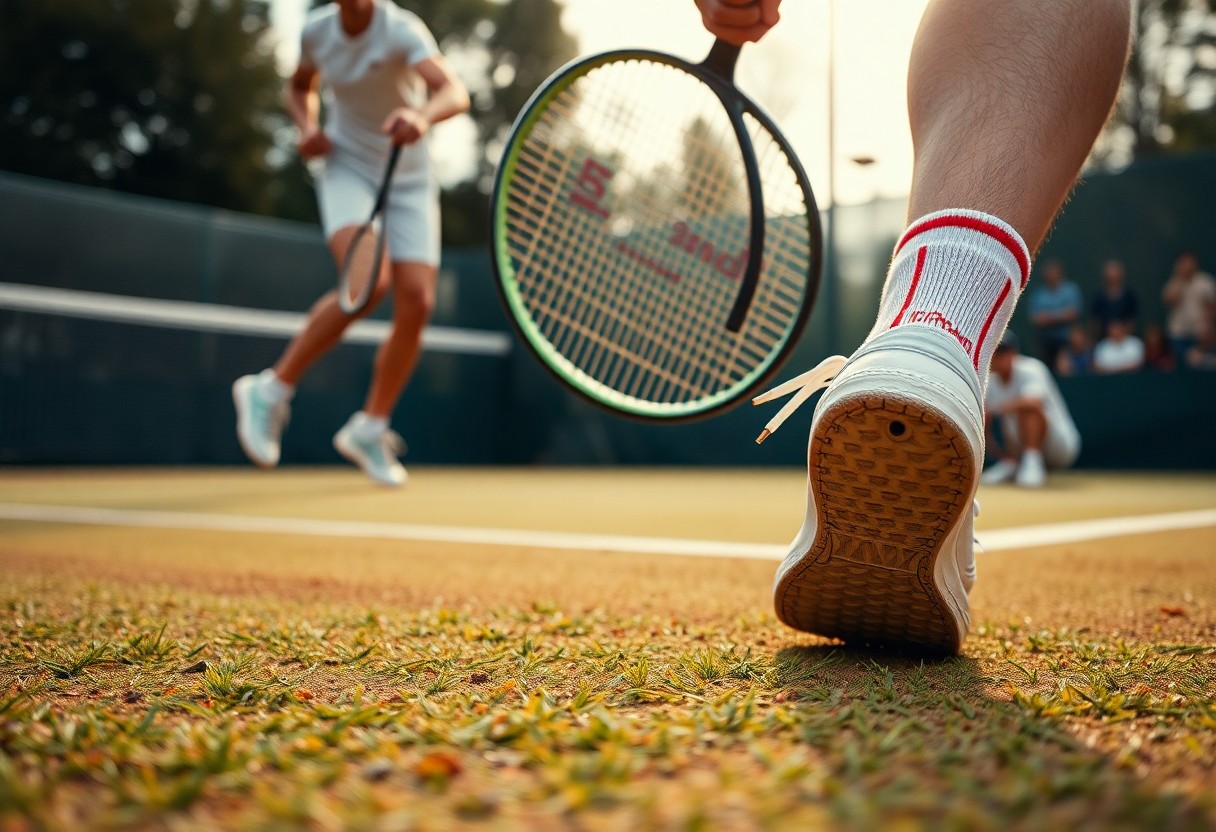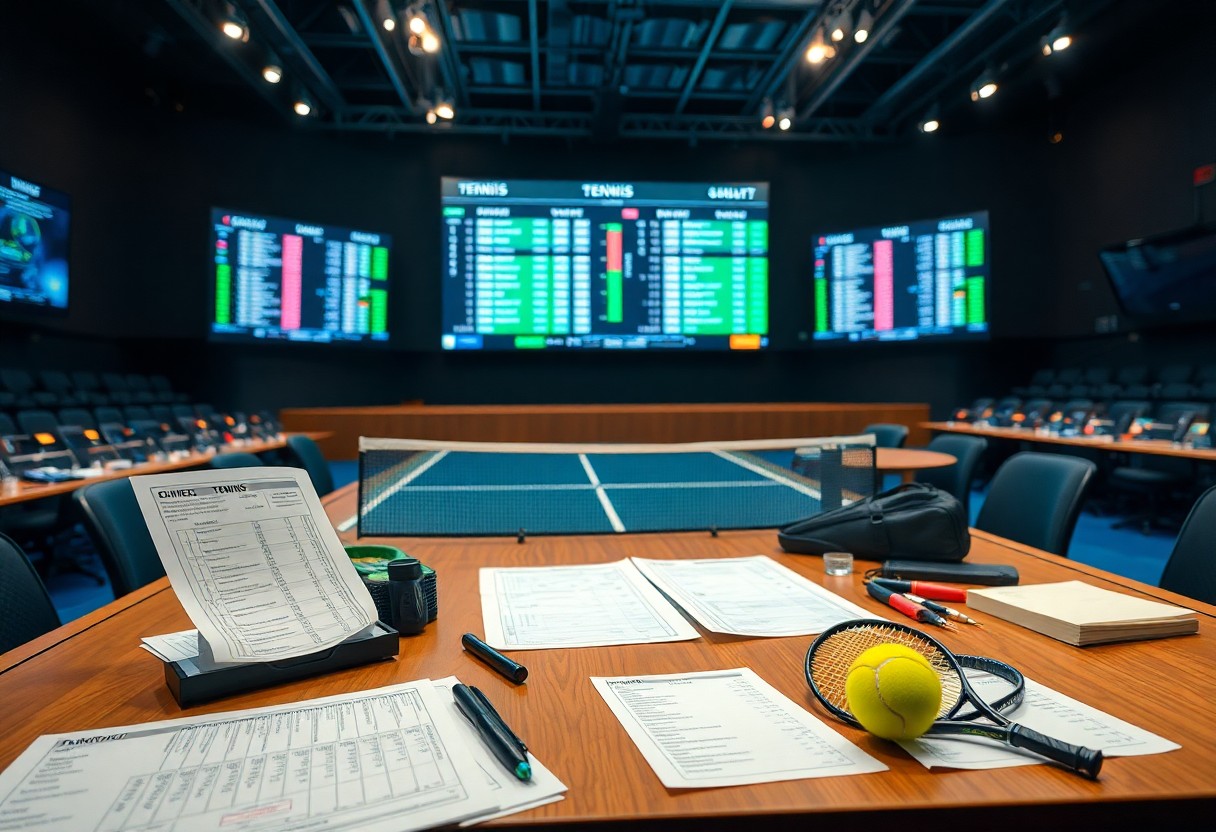Over the years, the iconic grass courts of Wimbledon have garnered attention for how they influence player performance during the tournament. You may wonder how the unique characteristics of this surface affect everything from ball speed and bounce to player stamina and strategy. Understanding these nuances can provide valuable insights into how top athletes adapt their games on grass, ultimately impacting match outcomes. This post will explore the distinctive features of the Wimbledon surface and their implications for player performance, giving you a deeper appreciation of this prestigious tennis championship.
The Unique Characteristics of Grass Courts
The grass courts of Wimbledon create an entirely distinct playing experience, characterized by their natural elasticity and quick surface speed. Players often find that the ball bounces lower and faster compared to clay or hard courts, requiring a unique approach to both shot selection and movement. Grip can also be inconsistent due to the varying thickness of the grass and its state of maintenance throughout the tournament, demanding adaptability and agility from competitors.
Historical Significance and Evolution of the Surface
Grass courts have a rich history, originating from the 12th century when lawn tennis was first played on such surfaces. Wimbledon, established in 1877, has maintained this tradition, making it the only Grand Slam still played on grass. Over the years, the type of grass used has evolved, shifting from traditional varieties to modern hybrids like Perennial Ryegrass for better durability and performance under the rigors of high-level competition.
Physical Properties Impacting Play Dynamics
The physical properties of grass courts significantly influence the dynamics of play, from ball speed to player movement. The soft surface provides a natural cushioning effect, which can reduce player fatigue and impact. However, the unpredictable nature of the grass can lead to erratic bounces, forcing players to adapt quickly to maintain their intensity and focus during critical points.
The grass’s unique composition—primarily consisting of short, dense blades—allows for a rapid ball speed due to its low friction. This leads to faster rallies, demanding players to position themselves wisely and make split-second decisions. Additionally, the terrain can change daily based on weather conditions and foot traffic, affecting players’ strategies. Superior grass court players, like Roger Federer and Pete Sampras, have thrived by mastering these nuances, highlighting how critical the surface is to their game plans during Wimbledon.
Influence of Grass on Player Movement and Strategy
The unique properties of grass courts profoundly shape how players move and strategize during matches. The speed of the surface leads to quicker points, compelling athletes to adjust their instincts and timing. As the ball skids off the grass differently than it would on clay or hard courts, shot selection and placement become pivotal. Players often prioritize an aggressive playing style, favoring volleys and serve-and-volley tactics to capitalize on the court’s characteristics. The slight unpredictability of the grass also means that adaptability is key, influencing your choices and overall approach throughout the match.
Traction and Speed: The Balancing Act
Grass courts offer a delicate balance between traction and speed, challenging you to find the right footing while maximizing your movement. While the soft surface can provide a certain level of grip, it also leads to a slickness that requires careful navigation. You might notice how your acceleration and deceleration must be tempered, especially when transitioning from side to side. The need for explosive speed—combined with the potential for slipping—means that strategic foot placement becomes critical for maintaining balance and flow throughout your game.
Adjusting Footwork: Why Athletes Change their Game
Players must re-evaluate their footwork techniques when migrating to the grass courts of Wimbledon. With a lower bounce and variable surface speeds, you may find that traditional footwork strategies from other surfaces become less effective. Instead, adapting your stance and movement patterns can greatly enhance your performance. Focusing on a more compact footwork style not only improves your stability but also prepares you for the quick shifts and shorter rallies typical on grass. This tactical adjustment can lead to a more productive game style, as it enables you to stay light on your feet while anticipating your opponent’s shots.
As you embrace the nuances of grass, your footwork adaptation game becomes even more vital. Swapping out long strides for quicker, more agile movements can help mitigate the changing dynamics of the surface. Players often begin employing split steps to read serves more effectively, allowing for rapid responses to their opponent’s actions. Foot positioning changes also come into play; favoring a lower center of gravity not only enhances stability but boosts your readiness for powerful volleys and returns. Understanding these adjustments not only aids you in navigating the match but can also be the difference between seizing pivotal points and losing them. Such insights play a crucial role in your success on the iconic Wimbledon grass courts.
The Role of Perception in Grass Court Performance
Your mental perception of the grass surface can significantly influence your performance. Players familiar with the nuances of grass often report that their cognitive interpretation of the surface affects their decision-making and execution of shots. For instance, considering the faster bounce and unpredictable behavior of the ball on grass can help you anticipate plays more effectively, leading to improved focus and confidence on the court.
Mental Adaptation: Overcoming Surface-related Anxiety
Anxiety regarding a less familiar surface can hinder your game. Adapting mentally involves embracing the speed and occasional unpredictability of grass courts. Visualization techniques, for instance, can help you anticipate the conditions better, reducing apprehension and allowing you to react swiftly during matches. Many players practice mindfulness strategies to enhance concentration and minimize distractions related to surface dynamics.
Strategies Employed by Veterans Versus Newcomers
Veterans often leverage extensive experience to navigate grass courts effectively, while newcomers may rely on athleticism and raw talent. Established players, such as Roger Federer, capitalize on their knowledge of court behavior, using slice shots and placement to exploit opponent weaknesses. Newcomers, however, tend to engage in aggressive playstyles, often resulting in inconsistency against more strategic veterans. The contrasting experiences underline the importance of adaptable strategies based on familiarity with the surface.
Veterans like Serena Williams showcase a deep understanding of grass surfaces, using precise footwork and shot selection to dictate play. They have developed clever strategies to exploit their opponents’ weaknesses, often adopting a more patient approach to rallying. In contrast, newcomers, such as recent junior champions, might focus on power and speed, relying on instinct rather than strategy. This difference highlights how adaptability on grass can differentiate players and underscores the crucial learning curve for those new to this unique environment.
Weather Variables: How Nature Shapes the Game
The outdoor setting of Wimbledon makes it vulnerable to mother nature’s whims, significantly affecting player performance. From sweltering sun to sudden rain showers, the weather can turn a perfectly planned match into a test of adaptability. For you, this translates not only to adjustments in strategy but also influences physical endurance and mental fortitude, demonstrating just how necessary it is to be prepared for changing elements during play.
Moisture and Temperature: Fluctuations in Playing Conditions
Fluctuating Weather Conditions
| Condition | Impact on Players |
|---|---|
| High Humidity | Increases player fatigue due to excessive sweating and dehydration risk. |
| Low Temperatures | Can lead to muscle stiffness and reduced agility during play. |
| Sunny Conditions | May enhance visibility but can also cause overheating and fatigue. |
| Rain Delays | Interrupts gameplay and disrupts players’ rhythm, affecting mental focus. |
Impact of Weather on Match Duration and Player Stamina
Weather does not just influence how the ball bounces; it directly correlates with match length and the demands placed on player stamina. For instance, high temperatures can lead to quick fatigue, forcing shorter rallies and more frequent breaks. On the other hand, wet conditions often disrupt play entirely, elongating matches and forcing players to remain in a constant state of alertness. You’ll notice this rhythm shift when a match encounters delays; players must maintain focus mentally, leading to an exhausting juggling act of physical stamina and psychological resilience.
This heightened stress can lengthen matches dramatically. Extended rallies in wet or humid conditions can add to exhaustion, pushing players to their limits over hours of intense gameplay. A notable example is the 2008 final, where Rafael Nadal and Roger Federer battled not only each other but also cold, damp weather. Lasting nearly five hours, you can see how the environment shaped both the outcome and the players’ performance, highlighting the intricate dance between skill and nature at Wimbledon.
The Psychological Edge: Thriving on Grass
Competing on grass often provides players with a distinct mental advantage. The softer surface tends to favor an aggressive playing style, allowing you to implement powerful serves and quick volleys more effectively. This not only boosts confidence but also creates a rhythm that can intimidate opponents. The unique conditions require adaptability, and mastering them can lead seasoned players to exude an air of supremacy that is psychologically beneficial during high-pressure matches.
Historical Performance Trends Among Top Players
Observing historical data reveals that certain players thrive on grass courts more than others. Legends like Roger Federer and Pete Sampras boast remarkable Wimbledon records, with seven and seven titles, respectively. These statistics illustrate how these athletes have adapted their training regimens specifically for grass, allowing them to leverage their unique styles effectively in this setting.
Fan Dynamics: The Intangible Home Court Advantage
Wimbledon features a rich tapestry of fan involvement, contributing significantly to player performance. The crowd’s energy can create a palpable atmosphere that influences match momentum. Home-grown players like Andy Murray naturally draw support, often elevating their performance when cheered on by enthusiastic local fans. This connection can ignite a fighting spirit that translates into impressive rallies and pivotal victories.
The interaction with the crowd at Wimbledon elevates the tournament’s atmosphere, turning the matches into an emotional experience for both players and spectators. The palpable excitement and collective energy can act as fuel for your favorite player, pushing them to perform at their best. As the crowd erupts for key moments, this support can help rally players through challenging points, enabling them to draw on adrenaline and heighten their focus. The unique blend of tradition, enthusiasm, and passionate support at the All England Club creates an environment where the pressure becomes a motivational force, often leading home players to exceed their standard performance levels. This dynamic illustrates how the energy from the fans can transform matches into electrifying contests.
Final Words
Ultimately, understanding how the Wimbledon surface impacts your performance can significantly enhance your game strategy and training regimen. The grass conditions require you to adapt your footwork, serve, and overall playing style, emphasizing speed and precision. By recognizing the surface’s unique characteristics, you can better prepare yourself mentally and physically, giving you an edge as you approach this prestigious tournament. Your success on this iconic grass can depend on how well you adjust to its demands.




